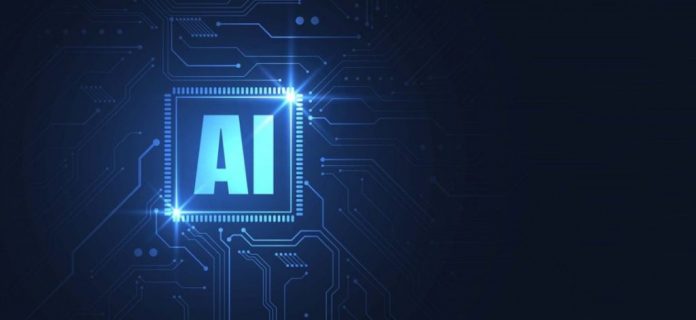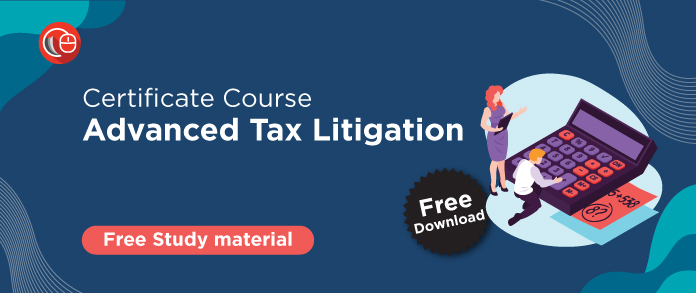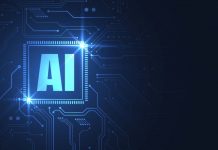This article has been written by Sarala D pursuing Certificate Course in Patent Law: Licensing, Claims and Litigation and has been edited by Oishika Banerji (Team Lawsikho).
This article has been published by Sneha Mahawar.
Table of Contents
Introduction
Patent protection for AI-generated inventions is a complex and evolving issue that is attracting increasing attention from both legal and technology communities. Debate on patent protection of AI-generated inventions came into the picture when Dr. Stephen Thaler, applied for a patent for two of the inventions conceived by DABUS. Dr. Stephen Thaler created the AI machine named DABUS and trained the AI machine to conceive inventions. Thus, the question of who the inventor of an AI-generated invention is, and thus eligible for a patent, is a central issue in this area. This article discusses the patent protection of AI-generated inventions in detail, focusing on growing issues surrounding this issue as well.
All you need to know about Artificial Intelligence (AI) generated inventions
AI-generated inventions refer to innovations, products, or services that are created through the use of artificial intelligence technologies. This can include anything from software applications that use machine learning algorithms to automate tasks, to physical products that are designed and manufactured using AI tools. AI-generated inventions can also include new types of technologies or devices that are created using artificial intelligence, such as autonomous vehicles or wearable devices that use AI to monitor and respond to changes in their environment. These inventions are typically characterised by their ability to perform complex tasks and make decisions without human intervention, using data and algorithms to learn and improve over time. Global technology giants are making enormous investments in AI technologies. The involvement of AI technologies in conceiving inventions is inevitable and is lucrative both in monetary and human effort. However, the question arises as to whether an AI-generated invention be patented, and should the AI machine be given the inventorship.
DABUS : artificial inventor
DABUS stands for “Device for the Autonomous Bootstrapping of Unified Sentience” and is an artificial intelligence tool developed by Dr. Stephen L. Thaler, the CEO of Imagination Engines, in the US. DABUS works on interconnected complex neural networks to invent new ideas and came up with two inventions titled “FOOD CONTAINER AND DEVICES AND METHODS FOR ATTRACTING ENHANCED ATTENTION – WO2020079499”, “FOOD CONTAINER- EP3564144A1”.
DABUS is a type of connectionist artificial intelligence “creativity machine” and contains two artificial neural networks made of a series of smaller neural networks, trained with general information from various knowledge domains. DABUS’ two artificial neural networks generate new ideas and check for the novel aspects of the generated new idea. Stephen L. Thaler also mentioned that the machine only received training in general knowledge of the particular field and was quite independent while conceiving the invention and also while identifying if the invention is novel and salient.
Importance of understanding patent protection for AI-generated inventions
It is necessary to state that it is essential to develop an understanding about patent protection for inventions that are AI-generated as the same stand crucial for both individuals and companies, so that they can safeguard their ideas thereby reaping benefits out of the same. The importance have been reflected in the below-mentioned pointers:
- Innovation: Patent protection encourages innovation and creativity by providing legal protection for new and unique inventions. This can provide an incentive for individuals and companies to invest time and resources into developing AI-generated inventions, knowing that they can protect their investments.
- Competitive advantage: By obtaining patent protection, companies and individuals can gain a competitive advantage in the market by having exclusive rights to use, manufacture, and sell their AI-generated inventions.
- Legal clarity: Patent protection helps to provide clarity and certainty in the legal framework surrounding AI-generated inventions. This can help to reduce the risk of disputes and legal battles over ownership and control of these inventions.
- Licensing and royalties: Patent protection can provide an opportunity for companies and individuals to licence or sell their AI-generated inventions, generating revenue through licensing fees or royalties.
- Preventing infringement: Patent protection can help prevent others from using, selling, or manufacturing AI-generated inventions without permission. This can protect the rights and interests of inventors and ensure that they receive proper compensation for their work.
Background of Patent Law and AI-generated Inventions
Patent law is a complex and rapidly evolving area of law that governs the legal rights of inventors and the protection of their innovations. The basic principles of inventorship are rooted in the idea that inventors should be able to enjoy exclusive rights to their inventions for a limited period of time in exchange for publicly disclosing their innovations. In general, the principles of inventorship state that an inventor is someone who has made a significant contribution to the conception or reduction to the practice of an invention. The definition of what constitutes a significant contribution varies by jurisdiction, but it typically includes contributing to the conceptualization of an invention, developing new technology, or improving upon existing technology. In order to obtain a patent, an invention must meet several legal requirements, including novelty, non-obviousness, and utility. Novelty requires that the invention not be known or disclosed to the public before the patent application is filed. Non-obviousness requires that the invention not be obvious to someone skilled in the relevant field. The utility requires that the invention have some practical application or use.
Overview of the current legal framework for patent protection
The current legal framework for patent protection varies by country, but most countries have laws and regulations in place that provide some form of protection for AI-generated inventions. In general, the legal framework for patent protection aims to balance the interests of inventors and the public, by providing inventors with exclusive rights to their inventions for a limited period in exchange for publicly disclosing their innovations. In the United States, the primary law that governs patent protection is the Patent Act of 1952, which gives inventors the right to exclude others from making, using, selling, and importing an invention for a period of 20 years from the date of filing. In order to obtain a patent, an invention must be novel, non-obvious, and useful.
In Europe, the European Patent Office (EPO) is responsible for granting patents that cover all member countries of the European Patent Organization. The EPO requires that inventions be novel, inventive, and capable of industrial application in order to be eligible for patent protection.
In India, the primary law that governs patent protection is the Patents Act of 1970, which provides for the grant of patents for inventions that are new, inventive, and capable of industrial application.
In China, the State Intellectual Property Office (SIPO) is responsible for granting patents and enforcing intellectual property rights. To be eligible for patent protection in China, an invention must be novel, inventive, and useful. It is important to note that the legal framework for patent protection of AI-generated inventions is still evolving, and there are ongoing debates and discussions about how best to balance the interests of inventors and the public in this area. Nevertheless, it is clear that obtaining patent protection can play an important role in securing the future of AI-generated inventions and ensuring that the benefits of these innovations are shared fairly and widely.
Legal Status of DABUS Inventions
The invention conceived by DABUS is in patent pending status in many jurisdictions such UK, Europe, and the US. The patent applications were rejected in the UK, Europe, and the US because the AI does not have a legal personality and cannot have a legal title. However, South Africa granted the DABUS patent, as the South African patent office only checked if a list of relevant forms is duly completed and submitted, rather than a substantive patent search and examination. Following the South African patent office granting the DABUS patent, the Federal Court of Australia provided a judgment stating that the AI can be listed as a patent inventor, which was to promote innovation and not to prohibit the Patent Act. However, there has been an appeal to the Full Federal Court.
Key challenges and questions in patent protection for AI-generated inventions
Patent protection for AI-generated inventions poses several key challenges and questions that need to be addressed by the legal system. Some of the most important challenges and questions include:
- Inventorship: Who should be considered the inventor of an AI-generated invention – the AI system, the human creator of the AI system, or both? These questions are rising on a daily basis with the rise in ambiguity in answering them.
- Originality and novelty: How to determine whether an AI-generated invention is truly new and non-obvious, and therefore eligible for patent protection?
- Human involvement: To what extent does human involvement in the creation of an AI-generated invention impact its eligibility for patent protection?
- Licensing and ownership: Who owns the rights to an AI-generated invention, and how should these rights be licensed or assigned? How to monitor and enforce patents for AI-generated inventions without much conflict?
- Infringement of AI-generated inventions: How to identify infringement of AI-generated inventions, and what penalties should be imposed for infringement based on a number of factors, including the role of the human actor, the ownership of the AI system, and the applicable legal framework of the jurisdictions.
- Ethical and public policy considerations: How to balance the public interest in encouraging innovation with concerns about the ethical and societal implications of AI-generated inventions?
Approaches to patent protection of AI-generated Inventions
Assigning inventorship to the AI system itself
Assigning inventorship to the AI system itself is a complex and controversial issue in the field of patent law. There is currently no consensus among legal experts on whether an AI system can be considered an inventor under existing patent laws.
- Recognition of AI’s role in the invention process: Assigning inventorship to the AI system acknowledges its contribution to the invention process and recognizes its role in creating new and innovative products and processes, while simplifying the inventorship process, as it eliminates the need to identify and assign inventorship to individual human contributors.
- Encouragement of AI development and innovation: By assigning inventorship to AI systems, companies and individuals may be encouraged to develop and innovate new AI technologies, as this will increase their chances of obtaining patents and securing their IP rights.
Limitations
- Legal uncertainty: There is currently a great deal of uncertainty surrounding the legal recognition of AI systems as inventors, and it may be challenging to obtain patents or enforce IP rights in some jurisdictions.
- Ethical concerns: Assigning inventorship to AI systems raises important ethical questions about the responsibility of humans for the actions of AI systems and the impact of AI-generated inventions on society and the environment.
- Lack of accountability: Assigning inventorship to the AI system may result in a lack of accountability for the actions of AI systems, which could have negative consequences for society and the environment.
- Impact on human inventors: Assigning inventorship to AI systems could have a negative impact on human inventors, as it could reduce the recognition and rewards associated with human innovation and creativity.
Assigning inventorship to the human creators or users of the AI system
- Establishes clear ownership: By assigning inventorship to human creators or users, it becomes clear who owns the invention and who can claim the rights to it. This can help prevent disputes and legal issues related to ownership.
- Recognizes human ingenuity: Assigning inventorship to humans recognizes the role that human creativity and problem-solving skills play in developing AI systems and the inventions they generate. This can be important in terms of acknowledging the contributions of human inventors.
- Provides clarity in licensing and commercialization: By assigning inventorship to human creators or users, it is easier to understand who should be compensated for the commercialization of the invention and who should receive royalties.
Limitations
- Overlooks the role of AI: Assigning inventorship solely to humans may overlook the role of the AI system in generating the invention. It may also not accurately reflect the true nature of the invention and the contributions made by the AI system.
- Creates ambiguity in liability: If the invention is jointly created by the AI system and the human creators or users, assigning inventorship solely to one party may create ambiguity in terms of liability for any legal or ethical issues that may arise from the use of the invention.
- Ignore the implications of AI autonomy: In cases where the AI system has some degree of autonomy, it may be argued that assigning inventorship solely to human creators or users overlooks the implications of AI autonomy and the need for AI systems to have a voice in determining how their creations are used and protected.
Combination of AI system and human creators or users
Combining the contributions of both the AI system and the human creators or users in assigning inventorship can be seen as a way to address some of the limitations of assigning inventorship solely to either party.
- Recognizes the role of both parties: By combining the contributions of the AI system and the human creators or users, this approach recognizes the role of both parties in generating the invention. This can help to acknowledge the contributions of both the AI system and the human users and reflect the complexity of the invention process.
- Addresses the limitations of sole inventorship: By combining the contributions of both parties, this approach can overcome some of the limitations of assigning inventorship solely to either the AI system or the human creators or users. For example, it can address some of the legal and ethical concerns of assigning inventorship to the AI system, while also acknowledging the limitations of assigning inventorship solely to the human creators or users.
Limitations
- Complex determination of inventorship: Determining the inventorship of an AI-generated invention can be a complex process, especially when multiple parties are involved. It requires a detailed assessment of the contributions of each party to determine who should be considered as the inventor.
- Legal and ethical considerations: Assigning inventorship to a combination of the AI system and human creators or users raises several legal and ethical considerations, such as how to determine the respective contributions of each party, how to fairly distribute any financial rewards, and how to ensure that the rights of each party are protected.
Is IP law equipped to handle work created by AI
- As with copyright law, if the work created by AI has human interference, it is possible to assign authorship to humans. However, it is not the same if the work created didn’t have any human interference. Hence, the copyright law related to authorship is not in compliance with AI-generated work.
- The trademark law deals with how the products are purchased, and how the consumers perceive the products. The AI-based systems influence consumers and their purchasing decisions by providing few choices to the consumers. The AI-based systems also reduce the importance of the very basic tenets of trademark law i.e., visual impact and comparison of trademarks. However, the Trademark law may not be the best option for all AI-generated inventions.
- Trade secrets can protect the algorithms and the training data used in the AI system and the output of the AI system. As with DABUS – the independent invention generator, both the algorithms and the training data to build DABUS and the output i.e, the invention perceived by DABUS can be protected under trade secrets. While AI-generated inventions can be protected as trade secrets, it may not be the best option for all AI-generated inventions, as trade secret protection typically lasts only as long as the information remains a secret.
Conclusion
Given the rapid pace of technological advancements and the growing importance of AI in various industries, it is likely that the issue of patent protection for AI-generated inventions will continue to be an area of focus in the coming years. It is important for policymakers, legal experts, and the technology community to work together to develop a clear and coherent framework for the protection of AI-generated inventions that balances the needs of innovation and intellectual property with the concerns of accountability, data privacy, and ethical considerations.
References
1. https://xaltius.tech/countries-leading-the-way-in-ai/
2. https://artificialinventor.com/patent-applications/
3. https://blogs.worldbank.org/opendata/inventors-and-innovations-era-ai
4. https://www.foxmandal.in/demystifying-the-inventorship-rights-of-an-ai-system-in-india/
Students of Lawsikho courses regularly produce writing assignments and work on practical exercises as a part of their coursework and develop themselves in real-life practical skills.
LawSikho has created a telegram group for exchanging legal knowledge, referrals, and various opportunities. You can click on this link and join:
Follow us on Instagram and subscribe to our YouTube channel for more amazing legal content.
 Serato DJ Crack 2025Serato DJ PRO Crack
Serato DJ Crack 2025Serato DJ PRO Crack














 Allow notifications
Allow notifications



